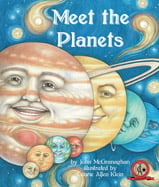Alignment to Standards for NH

| Grade | Number | Standard |
|---|---|---|
| 2 | S:ESS2:2:1.2 | basic patterns of the Moon, including its appearance sometimes at night and sometimes during the day; and how it appears to change shape through the month. |
| 2 | S:ESS3:2:2.1 | there are too many stars to count, and that they are unequal in their brightness. |
| 2 | S:SPS1:2:1.2 | Record observations using language, concrete objects, and symbolic representations. |
| 2 | S:SPS1:2:4.1 | Represent and interpret information and observations in many ways (such as in tally, pictographs, bar graphs, tables) |
| 2 | S:SPS4:2:2.1 | Communicate ideas and observations through a variety of tools and formats (e.g., oral, journal, drawing, projects, multimedia). |
| 2 | S:SPS4:2:3.3 | Make a graph to represent data. |
| 4 | S:ESS2:4:1.2 | Describe the Sun as a star. |
| 4 | S:ESS2:4:3.1 | Recognize that the Moon orbits the Earth. |
| 4 | S:ESS2:4:3.2 | Recognize that the Earth is one of a number of planets that orbit the Sun. |
| 4 | S:ESS2:4:4.2 | Explain why the planets look like stars, and why, over a period of time, they appear to wander among the constellations. |
| 4 | S:ESS3:4:1.1 | Recognize that astronomical objects in space are massive in size and are separated from one another by vast distances. |
| 4 | S:ESS3:4:1.2 | Explain that telescopes magnify the size of distant objects and significantly increase the number of these objects that can be viewed from Earth. |
| 4 | S:ESS3:4:2.1 | Recognize and describe the stars, like the Sun, as spherical in nature. |
| 4 | S:ESS3:4:2.2 | Recognize that stars come in different colors, and that the Sun is a yellow star. |
| 4 | S:SPS1:4:4.1 | Compile and display data in a variety of formats. |
| 4 | S:SPS4:4:7.1 | Keep a journal record of observations, recognizing patterns, summarizing findings, and reflecting on the observations. |